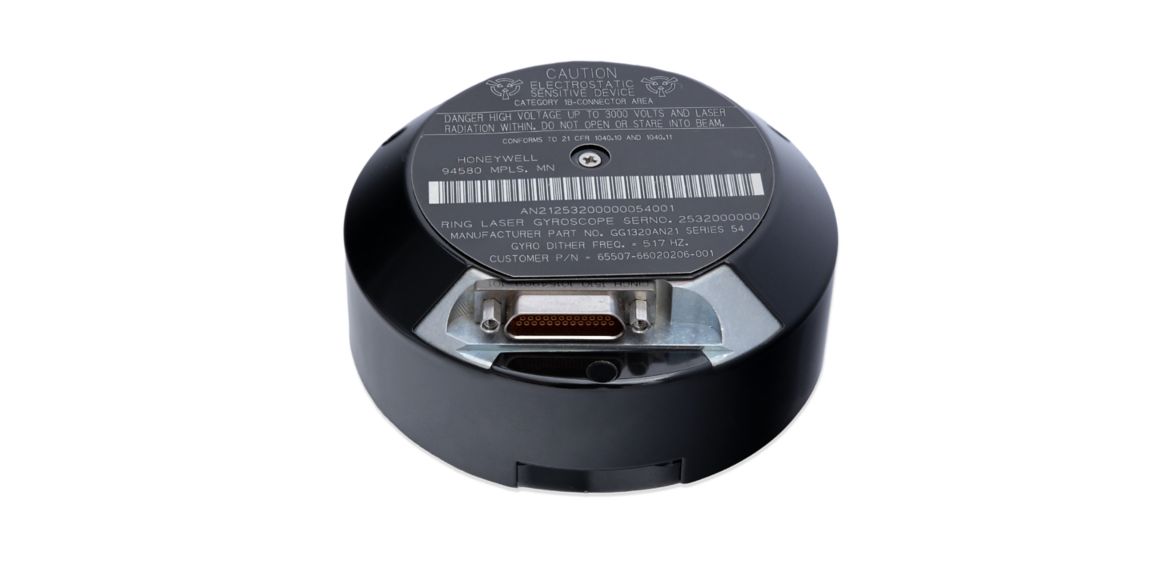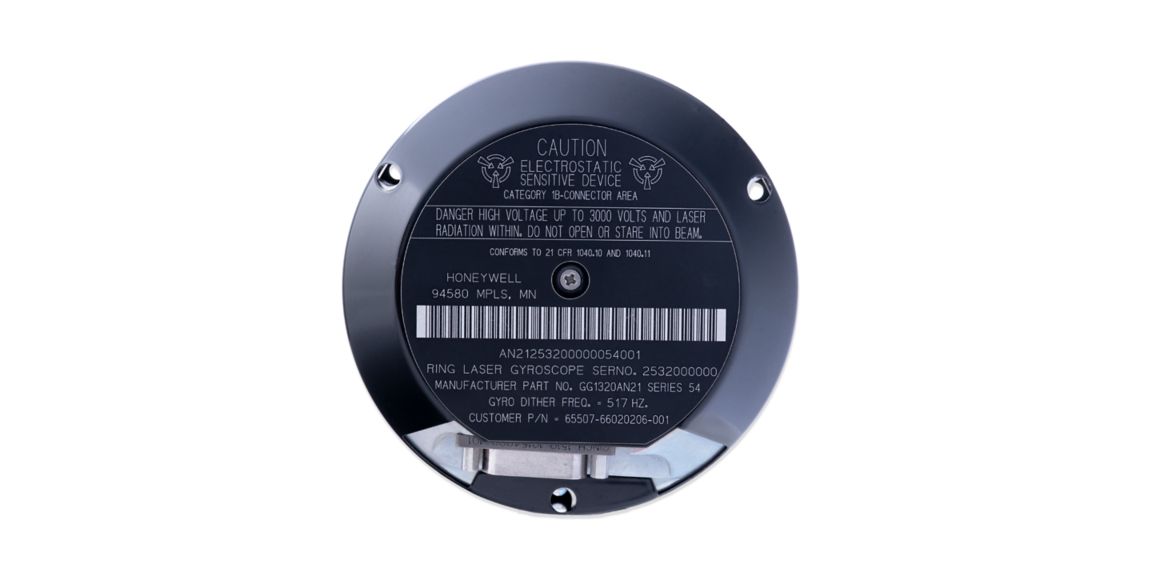GG1320AN Digital Ring Laser Gyroscope


In addition, gyroscopes are important elements in platform stabilization systems (i.e. antenna stabilization) and where accurate pointing and/or targeting is required.
Today, Honeywell's GG1320 digital ring laser gyro (RLG) is the industry standard for precision rotation measurement. It is an affordable high performance inertial sensor with the electronics, power supply and sense element packaged into an easy-to-use compact unit. The user supplies an input voltage and under rotation, the GG1320 provides a compensated rotation output.
The principle of operation of a RLG is two counter-propagating laser beams have different frequencies with the difference dependent on rotation rate. Measurement of this difference provides the rotation angle or rotation rate about the RLG's sensitive axis. Honeywell's GG1320 RLG has demonstrated capability of measuring an arc-second of rotation.
Honeywell gyro technologies include:
- Ring laser gyros (RLG)
- Micro-electro-mechanical (MEMS) gyros
- Fiber-optic gyros (FOGS)
Honeywell offers a low, medium, and high performance grade of GG1320AN2X available for purchase. See the ‘Product Brochure Title’ for further details. Further refinement of specific performance variables may be available by request.
Specifications
Performance
Angular Random Walk (ARW)
- 0.0035 deg/root-hour (typical)
Start-Up Time
- 1 second (typical)
Operating Magnetic Environment
- 0.002°/hr/gauss
Operating Attitude
- -20,000 ft. to +80,000 ft
- -610 m to +21,336 m
Operating & Non-Operating Shock
- 22 g, half sine, 11 millisecond
Latency
- 168 micro-seconds
Bias Stability
- 0.0035 deg/hr (typical)
Physical
Weight
- 1 lb. (454 grams)
Size
- Diameter 3.45 in (8.8 cm) millimetre
- Height 1.77 in (4.5 cm) millimetre
Connectivity and Systems
Scale Factor - Corrected
- 1,164,352 ±18 pulses/rev.
Sample Frequency
- 2,000 Hz (typical use) 5,000 Hz (maximum)
Interface
- RS-422, 25 pin micro D Asynchronous, 1 MHz, 8 Bit
Power and Electrical
Rate Input
- 900 deg/ sec (maximum)
Power
- 15 Vdc, 1.6 Watts nominal Watt
- 5 Vdc, 0.375 Watts nominal Watt
Mechanical
Operating Temperature
- -65°F to +185°F (Operating) -54°C to 85°C
Non-operating Temperature Range
- -65°F to +200°F (Non-Operating) -54°C to 93.3°C

